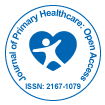
Primary Health Care: Open Access
Open Access
ISSN: 2167-1079

ISSN: 2167-1079
Anjiao Peng
China
Posters & Accepted Abstracts: Prim Health Care
Statement of the Problem: Epilepsy is a neurologic disease with high incidence rate there are almost 50 millions patients suffering epilepsy all over the world and this number increases year by year which generates huge social and economic burden. Approximately 30% of the patients will eventually develop refractory epilepsy defined as those seizures which canâ�?�?t be controlled despite two different kinds of tolerable medications (single drugs or in combination) with adequate duration. Methodology & Theoretical Orientation: In our early research, We identified that miR-153 was down-regulated in temporal epilepsy patients by Microarray profiling and later confirmed by real-time quantitative polymerase chain reaction (RT-qPCR), which results in overexpression of hypoxia-inducible factor-1�?±(HIF-1�?±). By Luciferase assay, we found two possible binding sites targeted by miR- 153 in the 3â�?�?UTR region of HIF-1�?± transcript. Accordingly, We have tested miR-153 using Microarray profiling (which was detailed in our former article) in more than one hundred patients to evaluate the validity and accuracy of this potential biomarker this year. Findings: We found that most patients with temporal lobe epilepsy, especially those refractory ones, have lower level of miR-153 in their blood. Conclusion & Significance: MiR-153 should be widely tested in suspected epilepsy patients, especially when refractory epilepsy was considered, since more aggressive treatment strategies could be adopted if refractory epilepsy were diagnosed earlier. For cases with easily accessible epileptogenic lesion, operation should be suggested if the MiR-153 test is positive suggesting high risk of developing refractory epilepsy. A multitude of patients would benefit from early operation which will lower economic burden for the patients and their families as well as the society.
Email: peng_neurology@163.com